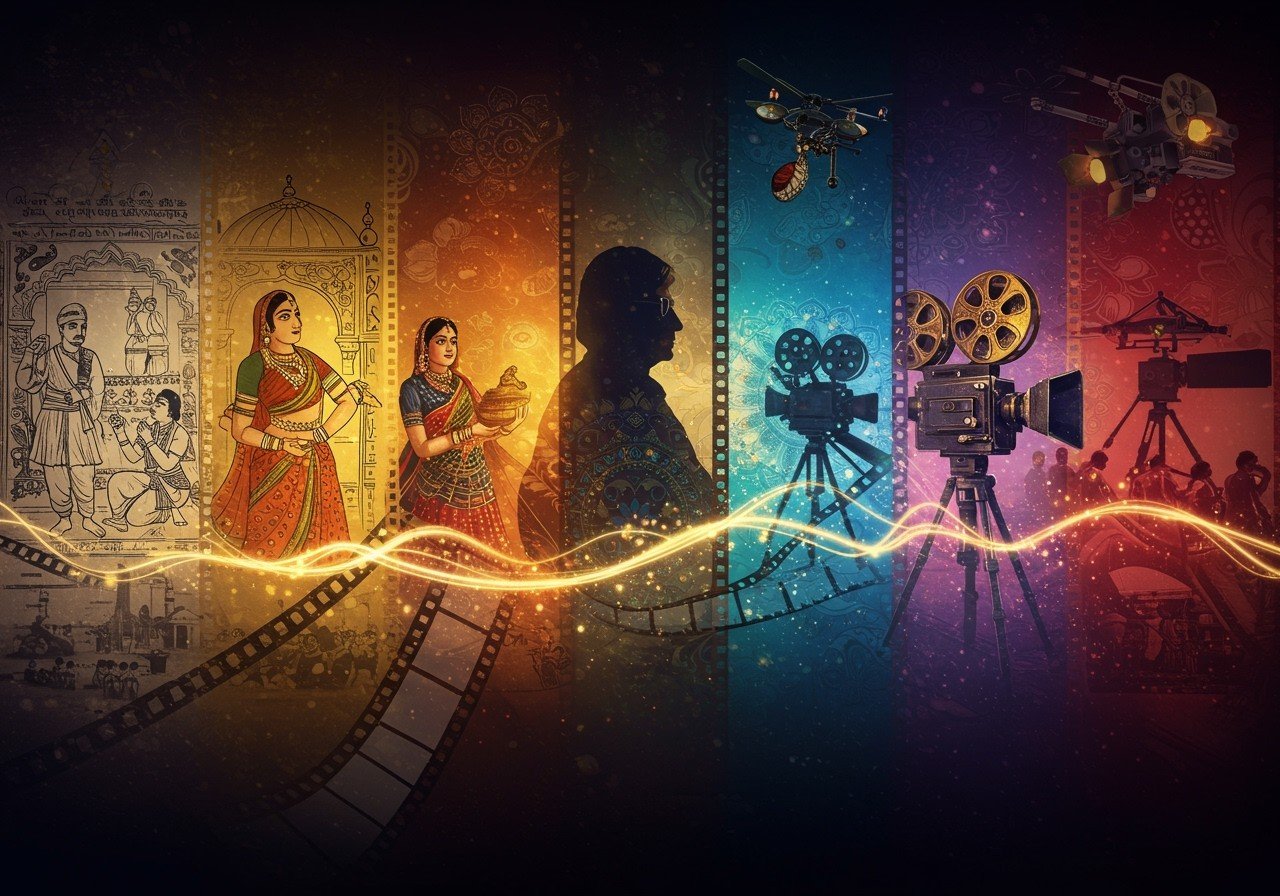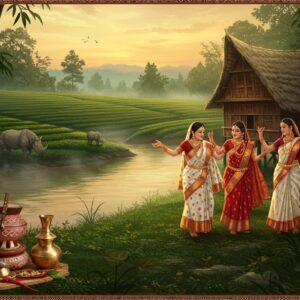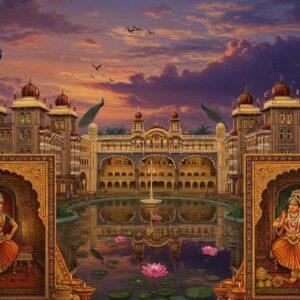
Indian cinema holds a special place in the cultural landscape, reflecting the nation’s diverse traditions and artistic expression. From its humble beginnings in the late 19th century, Indian cinema has blossomed into a global phenomenon, captivating audiences worldwide. This journey encompasses the rise of Bollywood, the vibrant tapestry of regional cinemas, and the ongoing evolution of storytelling in the digital age.
Early Beginnings (1896-1912)
The story of Indian cinema commences with the Lumière Brothers’ film screenings in Mumbai on July 7, 1896. This marked the introduction of motion pictures to India, sparking curiosity and laying the groundwork for a new art form. In 1899, Harishchandra Sakharam Bhatavdekar, also known as Save Dada, filmed ‘The Wrestlers‘, a wrestling match in Mumbai, creating what is considered the first Indian motion picture.
Celebrate this history with traditional Indian combs available at Poojn.in.
The Silent Era (1913-1930)
-
1913: Birth of Feature Films: Dadasaheb Phalke, revered as the “Father of Indian Cinema,” directed and released ‘Raja Harishchandra’, India’s first full-length feature film. Phalke’s multifaceted role encompassed direction, writing, cinematography, editing, makeup, and art direction, demonstrating his pioneering spirit and dedication to the art.
-
Mythological and Historical Narratives: The silent era was characterized by a focus on mythological and historical themes, drawing inspiration from ancient epics like the Mahabharata and Ramayana. These stories resonated deeply with audiences, connecting them to their cultural heritage and providing moral guidance.
-
Regional Cinema Emerges: The seeds of regional cinema were sown during this period. In 1919, the Madan Theatre Company of Calcutta produced ‘Billwamangal’, the first Bengali-language film, marking the beginning of a rich tradition in Bengali cinema.
The Sound Era (1931-1950s)
-
1931: The Dawn of Talkies: Ardeshir Irani’s ‘Alam Ara’ (1931) ushered in the era of sound in Indian cinema. This groundbreaking film incorporated music, dialogue, and sound effects, transforming the cinematic experience and setting the stage for a new wave of creativity. Light up your home just like the silver screen with diyas from Poojn.in.
-
Early Sound Films: ‘Ayodhyecha Raja’ (1932) became the first Marathi sound film, further expanding the reach of talkies across different linguistic regions. The East India Film Company’s ‘Savitri’ (1933) garnered critical acclaim, demonstrating the growing artistic maturity of Indian cinema.
-
Rise of Studios and Stars: The 1930s and 1940s saw the establishment of prominent film studios like Bombay Talkies and New Theatres, nurturing a new generation of actors including Prithviraj Kapoor, Ashok Kumar, and Devika Rani, who became iconic figures in Indian cinema.
The Golden Age (1950s-1960s)
This era is widely considered the Golden Age of Indian cinema, characterized by the emergence of auteurs like Satyajit Ray, Raj Kapoor, and Guru Dutt, who created timeless classics that continue to inspire filmmakers today. Regional cinema flourished, with Satyajit Ray’s ‘Pather Panchali’ marking a turning point in Bengali cinema and putting Indian cinema on the global map. Marathi cinema, led by filmmakers like V. Shantaram, tackled social issues and historical narratives, while South Indian cinema gained popularity with its action-packed films and vibrant dance sequences.
Masala Films and Beyond (1970s-Present)
The 1970s and 1980s saw the rise of “masala” films, a unique blend of action, romance, drama, and comedy. Amitabh Bachchan, the “angry young man,” achieved superstardom during this period, becoming a cultural icon. The 1990s brought about modernization, with commercial cinema embracing special effects, faster-paced narratives, and international influences.
Indian Cinema Today and Beyond
Today, Indian cinema is a vibrant mix of traditions and modern storytelling. It produces a large number of films annually, catering to diverse audiences across the globe. The influence of regional cinema remains strong, enriching the overall cinematic landscape. With the advent of digital platforms, Indian cinema has reached new heights, connecting with a global audience and continuing to evolve in the digital age.
Frequently Asked Questions
What were the early influences on Indian cinema? Early Indian cinema drew inspiration from traditional Indian art forms like theatre, music, and storytelling. Religious epics and mythological tales also played a significant role in shaping the narratives of early films.
How did the arrival of sound change Indian filmmaking? The introduction of sound revolutionized Indian cinema by adding a new dimension to storytelling. Dialogues, music, and songs became integral elements, enhancing the emotional impact and cultural relevance of films.
What is the significance of regional cinema in India? Regional cinema plays a vital role in showcasing the linguistic and cultural diversity of India. It offers unique perspectives, addresses regional issues, and preserves local art forms, enriching the overall cinematic tapestry of the nation. Learn more about South Indian traditions at Poojn.in.
How has Indian cinema adapted to the digital age? Indian cinema has embraced digital technologies, transforming production, distribution, and consumption. Digital platforms have expanded the reach of Indian films, making them accessible to global audiences and creating new opportunities for filmmakers.
What are the future prospects for Indian cinema? Indian cinema’s future is bright, with a focus on diverse storytelling, technological advancements, and global collaborations. New talent continues to emerge, pushing creative boundaries and ensuring that Indian cinema remains a vibrant and influential force in the world of entertainment.


